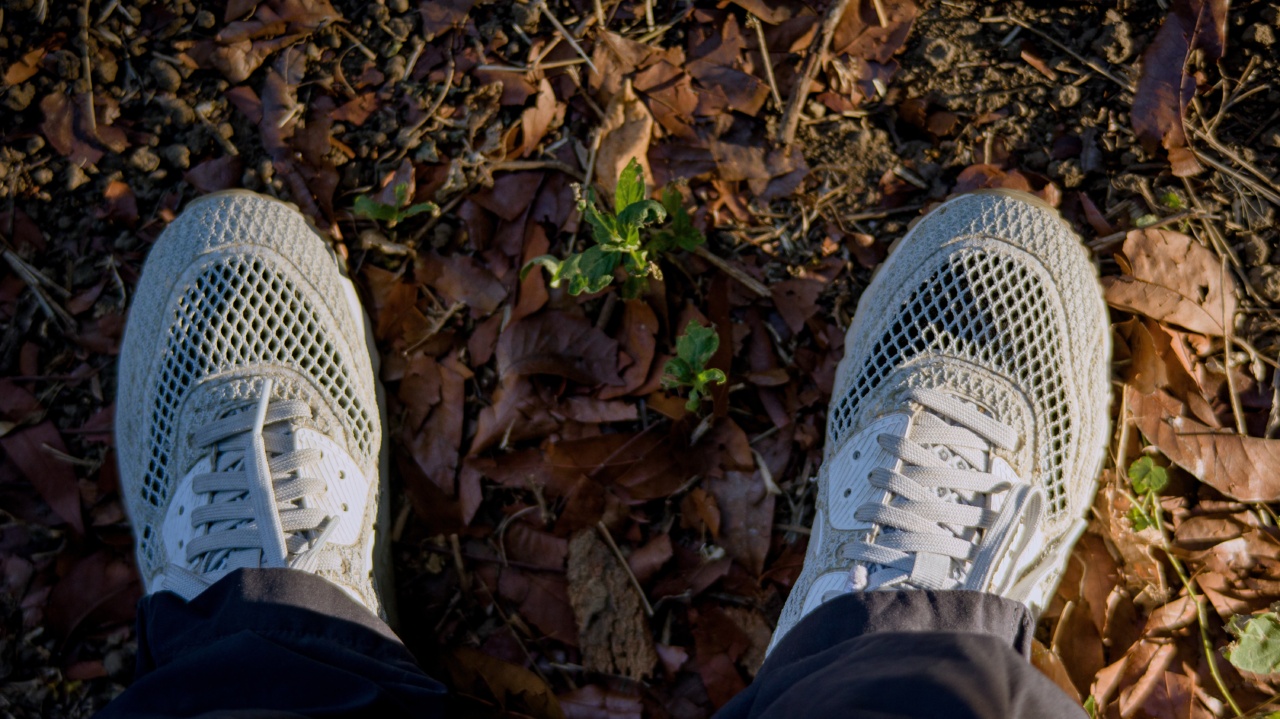Foot fungi, such as athlete’s foot and toenail fungus, can be not only annoying but also quite uncomfortable. They can cause itching, burning, and even pain. If left untreated, foot fungi can spread and become even more difficult to eradicate.
Fortunately, there are numerous ways to combat foot fungi effectively. In this article, we will explore the top 30 methods to treat and prevent foot fungi for good.
1. Keep Your Feet Clean and Dry
The first step in preventing and treating foot fungi is to maintain proper foot hygiene. Clean your feet thoroughly with mild soap and warm water every day.
After washing, make sure to dry your feet completely, paying special attention to the spaces between your toes.
2. Use Antifungal Soaps and Cleansers
To amplify the effectiveness of regular soap, opt for antifungal soaps or cleansers. These products are specifically designed to target and eliminate foot fungi.
Look for ingredients like tea tree oil, neem oil, or antifungal medications like clotrimazole or miconazole.
3. Change Your Socks Regularly
Wearing the same pair of socks for consecutive days can create an ideal breeding ground for foot fungi. Make sure to change your socks daily, preferably opting for moisture-wicking socks that keep your feet dry.
Avoid socks made of synthetic fabrics that trap moisture.
4. Choose Breathable Shoes
Poorly ventilated shoes can promote the growth of foot fungi. Opt for shoes made of breathable materials, such as leather or canvas, to allow airflow and keep your feet dry.
Avoid tight or plastic-based shoes that trap moisture and create a damp environment.
5. Rotate Your Shoes
Wearing the same pair of shoes every day prevents them from fully drying out and increases the likelihood of foot fungi. Rotate your shoes every other day to allow them to air out and prevent moisture buildup.
6. Avoid Walking Barefoot in Public Areas
Gym locker rooms, public showers, and swimming pool areas are common breeding grounds for foot fungi. Always wear flip-flops or sandals to protect your feet from coming into direct contact with these surfaces.
7. Use Antifungal Powder or Spray
After thoroughly drying your feet, apply antifungal powder or spray. These products help absorb moisture, prevent fungal growth, and keep your feet dry during the day. Look for powders or sprays containing ingredients like tolnaftate or undecylenic acid.
8. Avoid Sharing Footwear or Personal Items
Foot fungi can easily spread from person to person through sharing shoes, socks, or other personal items. Avoid borrowing or lending these items to prevent the transmission of foot fungi.
9. Trim Your Toenails Properly
Trimming your toenails regularly can help prevent toenail fungus. Cut them straight across and avoid cutting too close to the skin to reduce the risk of fungal infections.
10. Opt for Proper Footwear
Ill-fitting shoes can increase the risk of foot fungi. Ensure that your shoes fit properly, allowing enough space for your toes to move comfortably. Tight shoes can cause friction and create openings for fungi to enter.
11. Disinfect Your Shoes
Regularly disinfect your shoes to kill any existing foot fungi and prevent reinfection. Use antifungal sprays, powders, or ultraviolet shoe sanitizers to eliminate fungal spores. Allow the shoes to dry completely after treatment.
12. Wash Your Bedding and Socks in Hot Water
Bedding and socks can harbor foot fungi, contributing to reinfection. Wash your bedding and socks in hot water to kill any fungi present. High temperatures effectively eliminate the fungi, preventing them from spreading further.
13. Avoid Tight-Fitting Hosiery
Wearing tight stockings or hosiery can create an environment that promotes fungal growth. Choose loose-fitting, breathable hosiery to allow airflow and reduce moisture accumulation.
14. Opt for Breathable Footwear Inserts
Footwear inserts made from breathable materials, such as silicone or fabric, can help absorb excess moisture and reduce the risk of foot fungi. Replace them regularly to maintain their effectiveness.
15. Use Antifungal Nail Lacquer
If you have toenail fungus, consider using antifungal nail lacquer. Apply it to the affected nails as directed, and over time, it will help eliminate the fungus and promote healthy nail growth.
16. Apply Tea Tree Oil
Tea tree oil is a natural antifungal remedy known for its potent properties. Dilute the oil with a carrier oil and apply it directly to the affected area using a cotton ball or swab. Repeat this process twice a day for optimal results.
17. Soak Your Feet in Vinegar
Vinegar, particularly apple cider vinegar, can help combat foot fungi due to its antifungal properties. Dilute the vinegar with water and soak your feet in the solution for 15-20 minutes daily. Pat dry thoroughly afterward.
18. Apply Over-the-Counter Antifungal Creams
Over-the-counter antifungal creams, such as clotrimazole or miconazole, are readily available and effective in treating foot fungi. Apply the cream to the affected area according to the instructions on the packaging.
19. Consider Prescription Oral Medications
If over-the-counter treatments have failed to combat foot fungi, consult a healthcare professional. They may prescribe oral antifungal medications, such as terbinafine or itraconazole, to tackle the infection from within.
20. Seek Professional Treatment
If home remedies and over-the-counter treatments don’t provide relief, it may be time to seek professional treatment.
Podiatrists and dermatologists have various methods to combat foot fungi, such as laser therapy or prescription-strength topical medications.
21. Avoid Harsh Chemicals
While it’s important to keep your feet clean and dry, avoid harsh chemical products that can irritate the skin or worsen foot fungi. Look for gentle, natural alternatives that won’t disrupt the skin’s natural balance.
22. Use Antifungal Foot Baths
Antifungal foot baths can help kill the fungi and soothe the affected skin. Add antifungal solutions or essential oils with antifungal properties to warm water and soak your feet for 10-15 minutes. Repeat daily for optimal results.
23. Maintain Good Overall Hygiene
Foot fungi can be a reflection of overall hygiene. Practice good hygiene habits, including regular showers, clean clothing, and proper handwashing, to reduce the risk of acquiring or spreading fungal infections.
24. Avoid Excessive Foot Moisturization
While keeping your feet moisturized is important, avoid excessive moisturization between the toes. Moisture can create a conducive environment for fungi to grow. Focus on moisturizing the rest of your foot instead.
25. Wear Moisture-Wicking Insoles
Insoles made from moisture-wicking materials can help absorb excess sweat and reduce moisture accumulation. Opt for insoles with antifungal properties to further combat foot fungi and maintain foot hygiene.
26. Invest in Proper Foot Care Products
Various foot care products, such as antifungal sprays, powders, or creams, are available in the market. Invest in high-quality products that suit your needs and use them as directed to combat foot fungi effectively.
27. Maintain a Healthy Diet
A balanced diet can strengthen your immune system, making it more capable of combating fungal infections. Incorporate foods rich in vitamins, minerals, and antioxidants into your diet to support overall foot health.
28. Avoid Prolonged Moisture Exposure
Avoid allowing your feet to remain damp or moist for prolonged periods. Moisture provides a favorable environment for fungi to thrive. Dry your feet thoroughly after activities that involve excessive sweating or water exposure.
29. Practice Foot Exercises
By performing regular foot exercises, you can improve blood circulation and strengthen the foot muscles. Increased blood flow can aid in fighting foot fungi and promote faster healing.
30. Be Persistent and Patient
Dealing with foot fungi requires persistence and patience. It may take time for the infection to completely disappear. Follow the recommended treatments, maintain good foot hygiene, and be patient with the healing process.






























